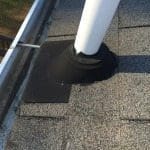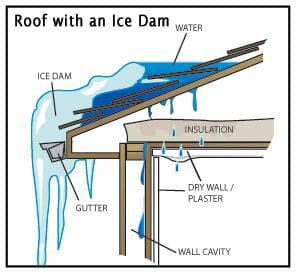Have you ever wondered what the pipes extruding through the top of your roof were? In most cases they are plumbing vents. They typically range in size from about 2″- 4″, and are sealed water tight with a pipe collar or boot. The most common flashing consist of an aluminum base with a rubber gasket that seals tightly around the vent. Unfortunately, while the aluminum base will last a lifetime, the rubber gasket has a much shorter lifespan, and can crack and deteriorate in just a few short years. Cracked or damaged pipe collars will leak water into your attic, and cause mold & mildew to grow, and If left alone long enough, can cause even more signification water damage.
When we complete gutter cleanings for our customers, we always check the condition of each pipe collar. If a pipe collar is damaged, we can generally repair it right there on the spot for a minimal cost to the homeowner. This is because we carry replacement rubber gaskets on all of our trucks. By replacing the damaged part of the pipe collar only, we are able to complete the repair quickly and easily, preventing costly water damage while also saving the customer money.




